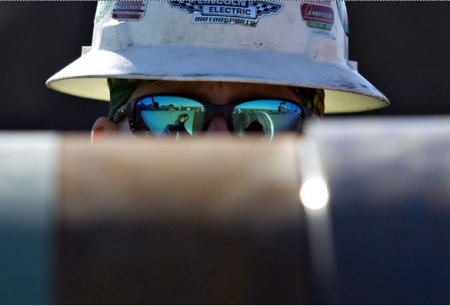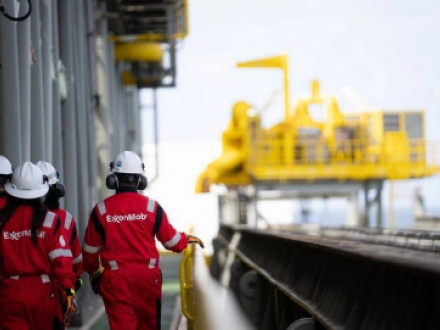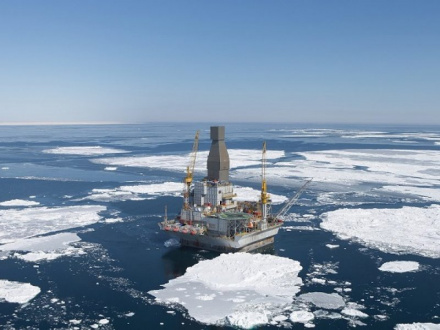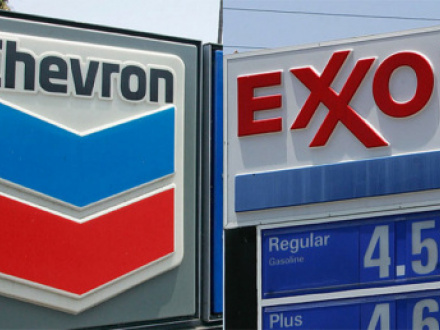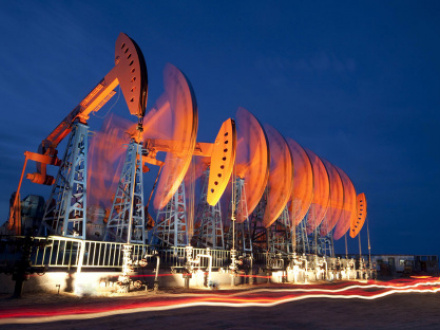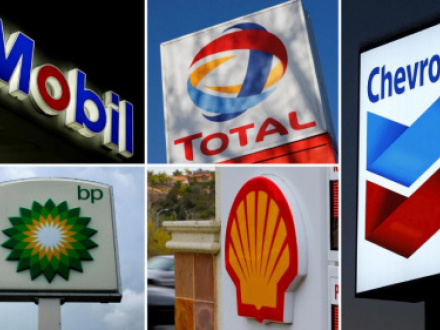Energy Majors Learn to Thrive After Price Crash
When OPEC started an oil-price war in late 2014, most people believed U.S. shale was doomed. In reality, the giant oil majors suffered most -- burdened by expensive mega-projects, Chevron Corp., BP Plc and the rest struggled to adapt to the fall in energy prices.
Slowly, those companies figured out how to survive in the lower-for-longer price era. They cut costs and, more importantly, learned how to stop them from rising again. In an industry that favored tailored solutions for every project, companies started to talk about standardization. At closed-door sessions in Davos, Big Oil bosses didn’t waste time on self-important talk, but instead discussed how to share the design of anything from underwater valves to pumps.
Nearly five years after the crash, the cultural change is starting to work. The world’s major energy companies have managed to press the reset button, allowing them to make profits today similar to what they did in a world of $100-plus a barrel oil prices.
Big Oil's Reset
Majors cut costs, learn to thrive amid lower prices
“Big Oil has been able to re-emerge from this downturn stronger and lower on the cost curve,” said Michele Della Vigna, the top oil industry analyst at Goldman Sachs Group Inc., who had been a critic of the majors.
The level of spending at the world’s eight largest integrated oil and gas companies fell last year to $118 billion, down 45 percent from a pre-crisis peak of $215 billion in 2013, according to data compiled by Bloomberg News.
But their business model has changed a lot in the process. The reliance on multi-billion dollar projects in far-flung corners of the world has been reduced and the majors are pouring billions into Texas’s Permian Basin, once dominated by independent exploration and production companies.
Other strategies include trying to build new projects closer to existing ones and reusing old infrastructure to reduce costs. They’ve also re-discovered the joys of integration, investing in refineries and petrochemical plants that make money even when prices are low.
To the surprise of many in the industry, lower costs haven’t translated into slower development. In fact, projects have often come ahead of expectations, like the giant Zohr gas field in Egypt, developed by Italian major Eni SpA.
New Era
The industry got a lot of help from its suppliers. According to Exxon Mobil Corp., the cost of 3D seismic technology, used to find underground reservoirs, and the deep-water rigs needed to exploit them has fallen more than 50 percent from the 2013 level.
The new era means combining projects that pay back quickly, whether in U.S. shale or elsewhere, with some traditional larger projects. In the oil industry, it’s a model called short-and-long oil cycle, because some projects pay back in as little to two-to-three years, compared to as long as 10 years for conventional projects.
“Big Oil now wants a diversified portfolio with short-and-long cycle oil,” said Daniel Yergin, the oil historian who this week hosts the annual CERAWeek energy conference in Houston. “Before the oil crisis in 2014-15, the mere concept of short-cycle oil didn’t exist in Big Oil.”
Short-cycle oil has a one big advantage over mega-projects: companies can dial them up and down quickly to respond to changes in oil and gas prices.
Gas Boom
The other significant change is natural gas. Big Oil had already embraced gas before the crisis, with companies like Exxon investing in massive projects in Qatar. But today some executives suggest gas is gaining the upper hand.
“Gas is the fastest growing hydrocarbon,” said Bernard Looney, chief executive for upstream at BP. “It’s the future.”
Despite the significant reduction in spending and much lower energy prices, returns haven’t suffered, according to data complied by Bloomberg. The biggest oil companies posted return-on-capital-employed -- a traditional yardstick used by investors -- of about 8.7 percent last year, higher than the 8.4 percent of 2014. Return-on-equity, another closely watched measure, has risen to 11.6 percent, the highest in six years.
The whole industry isn’t moving at the same pace, though. Exxon, for example, is boosting spending to catch up with rivals after some bad bets in Russia stymied its output growth. But in contrast to the pre-2014 world, the company is promising investors they’ll be given bang for their bucks, developing projects that will boost production.
By Javier Blas for Bloomberg
Source: https://www.bloomberg.com/news/articles/2019-03-10/oil-s-big-reset-energy-majors-learn-to-thrive-after-price-crash
Etiquetas
Publicado por Valeria Bernal
Noticias relacionadas
Venezuela suspende pactos energéticos bilaterales y solicita a Trinidad información sobre pruebas de campo de Exxon en bloque cerca de la frontera marítima. Venezuela... Leer más
El primer ministro iraquí afirmó que "el acuerdo representa un paso importante para el futuro del sector petrolero en Irak y el desarrollo de las relaciones económicas con... Leer más
Exxon y Rosneft firman un acuerdo no vinculante para recuperar pérdidas de $4.600 millones en proyectos rusos. La petrolera estadounidense Exxon Mobil y la gigante energética... Leer más
La oferta de Chevron para comprar la participación de Hess en los proyectos de Guyana es impugnada por Exxon y CNOOC. Esta semana, un panel de arbitraje privado de Londres... Leer más
Un tribunal de arbitraje de la Cámara de Comercio Internacional analizará el conflicto en una audiencia confidencial en Londres. El lunes comienza en Londres un arbitraje de alto... Leer más
Mientras el petróleo se mantiene en $65, siete empresas energéticas destacan por su solidez. A pesar de que los precios del petróleo rondan los $65 y la volatilidad... Leer más
Grandes compañías petroleras, incluyendo Shell, Exxon y Chevron, están evaluando la posibilidad de adquirir BP, valorada en $160 mil millones. Las acciones de BP registraron... Leer más
Exxon, Chevron, Shell y TotalEnergies mantienen sus agresivos planes de crecimiento de producción, incluso con ganancias en declive y precios del crudo a la baja. Las grandes petroleras no... Leer más
El gobierno de Guyana ha presentado al Parlamento un proyecto de ley sobre contaminación por hidrocarburos que propone responsabilizar a los responsables de los daños causados por... Leer más

